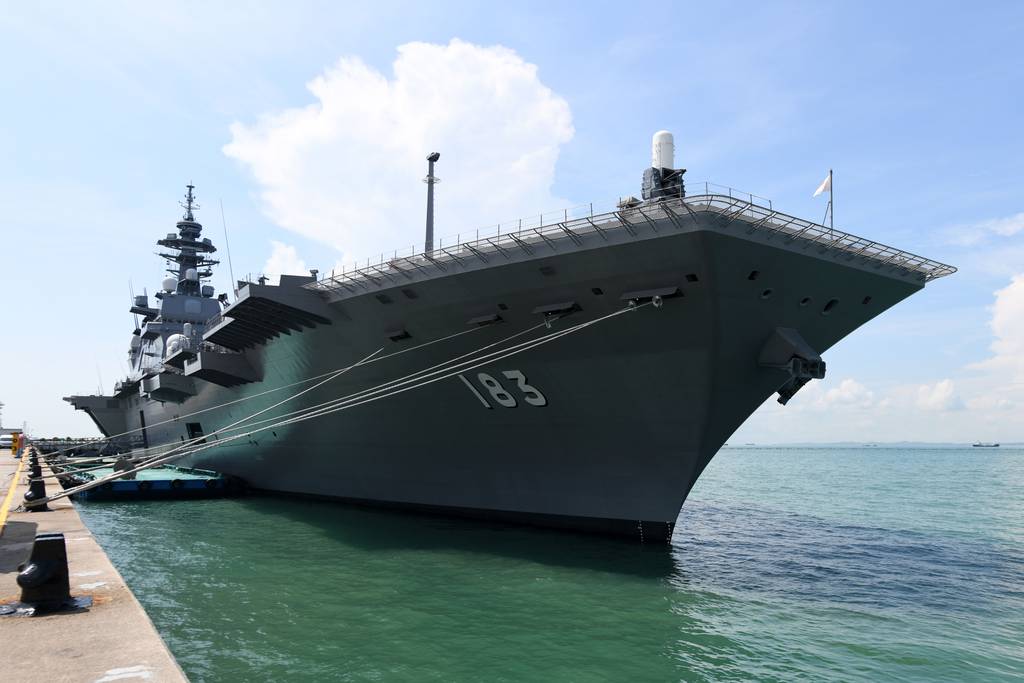Melbourne (06/07 – 25.00) Japan plans to send its recently converted aircraft carrier on the country’s annual deployment to the Indo-Pacific region, conducting training and enhancing ties with regional partners over the next four months.
The JS Izumo will accompany the destroyers JS Takanami and JS Kirisame as well as an unnamed submarine for the Indo-Pacific Deployment 2022 voyage, which is set to take place June 13-Oct. 28. Helicopters will also attend the deployment aboard the ships.
The country is also expected to send several Japan Maritime Self-Defense Force aircraft, including a Kawasaki P-1 maritime patrol aircraft, a UP-3D electronic intelligence training aircraft, and a ShinMaywa US-2 amphibian aircraft. It’s unclear if the aircraft will accompany the task force for the entire deployment.
:quality(70)/cloudfront-us-east-1.images.arcpublishing.com/mco/7H3ZB4BOBFEGNO66E2SYTYOC5M.jpg)
The deployment will see the maritime force participate in a number of naval exercises, including the multinational Rim of the Pacific drill near Hawaii in June and the Kakadu exercise in Australia in September. Other training activities include Pacific Vanguard 22 with the U.S., South Korean and Australian navies as well as a joint exercise with the Indian Navy.
Indo-Pacific Deployment 2022 will also features ships conducting port calls in Australia, Vietnam, the Philippines, Papua New Guinea and various South Pacific islands.
The Izumo was originally completed as a helicopter-destroyer primarily for anti-submarine warfare, but Japan has begun converting the vessel and its sister ship Kaga to operate the F-35B fighter jet.
The first stage of converting the Izumo is done, with the ship conducting takeoff and landing trials with Japan-based U.S. Marine Corps F-35Bs in October 2021, making it the first Japanese ship to operate a fixed-wing aircraft since 1945.
The next stage of the conversion will include rebuilding the front of the ship’s flight deck from a trapezoidal to a rectangular shape, along with changes to the ship’s internal spaces to accommodate F-35B operations. These changes will likely create an increase in aviation fuel capacity onboard and the availability of armored magazines to store air-launched weapons.
Japan is currently the largest overseas customer for the F-35, with plans for a total of 147 aircraft, including 42 F-35B short-takeoff-and-vertical-landing variants.















